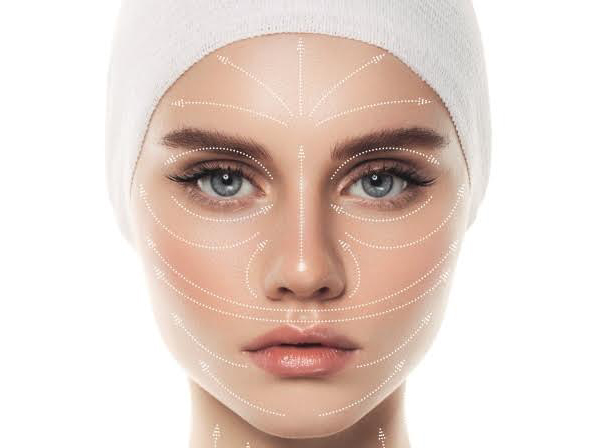
An ugly and dangerous side of the beauty industry, with rogue practitioners seeking profit at the expense of patient safety, has come under the spotlight recently.
Reports of disfigurement and sometimes, tragically, death when rules are broken or standards breached, are deeply concerning to us all.
As a beauty therapist or clinic owner, the relationship of trust established with your clientele is critical to ongoing success. With this comes the responsibility to stay on top of things in order to best advise, treat and address any of your valued clients’ concerns.
Australians now spend as much as $1bn annually on appearance medicine. More than a third of all cosmetic surgery is booked in the weeks leading up to summer and there is also a surge in demand for non-surgical procedures at this time of year.
Disturbingly, we see ‘special offers’ on all types of treatments seducing us to look our best, when cosmetic medicine needs to be taken more seriously. Any cosmetic medical or cosmetic surgical procedure carries risks and it’s important to be informed and stay vigilant for your own and your client’s safety and satisfaction.
Raising standards and protecting patients is the raison d’être of the Australasian College of Cosmetic Surgery (ACCS), which recognises the need for procedure-specific education and training for cosmetic medical and cosmetic surgical practitioners.
In-depth training is offered to select practitioners who meet the entry requirements for their Fellowship program. The ACCS also hosts the annual COSMETEX conference – a multidisciplinary best practice forum that meets the growing range of cosmetic surgery and cosmetic medical procedures with excellence.
The ACCS works closely with regulatory authorities and government to help guide and inform best practice. It also raises public awareness about industry standards through national consumer and trade media campaigns.
As part of its Code of Practice, the ACCS produces resources such as a patient information brochure that outlines the questions you should ask yourself if you’re considering a cosmetic medical or cosmetic surgical procedure. (The Code of Practice and the patient information brochure can be downloaded from the College website – www.accs.org.au)
Questions to ask your doctor:
- What is your training?
- How many times have you performed this procedure before and in the last year?
- What are the risks with this procedure and what is your own complication rate?
- What are the alternatives to the procedure being considered?
- Can I see results of your patients who looked similar to me before their surgery?
Questions to ask yourself:
- Do I feel confident with this doctor?
- Do I feel confident about having this procedure?
- Have all my questions been answered satisfactorily?
- Am I happy with all of the arrangements that have been made for me?
- Do I understand the risks and potential complications with this procedure?
Some other points to consider:
Cosmetic medicine broadly covers non-surgical procedures, including anti-wrinkle and dermal filler injections and laser, whereas cosmetic surgery procedures (such as breast augmentation, rhinoplasty and eyelid surgery) involve cutting the skin. All cosmetic procedures require advanced training to be safely and satisfactorily performed.
The top five cosmetic procedures in Australia are:
- Anti-wrinkle injections
- Fillers
- Laser and IPL
- Breast augmentation and reduction
- Liposuction
Don’t rush a decision on any cosmetic procedure
- Regulations vary from state to state. In NSW, a seven-day cooling off period must be offered to each patient regarding prospective cosmetic surgery.
Don’t be seduced by a discount offer for cosmetic surgery
- Decisions about your body and appearance need to be based on safety and quality, not an incentivised ‘deal’.
Beware of cosmetic tourism
- Cosmetic surgery tourism is a discount, cost-driven business, which often uses commission-driven or otherwise paid agents as well as discounted holiday packages to lure consumers. The College considers these approaches to be contrary to good medical practice and to the ACCS’s Code of Practice, Commonwealth laws and ethical-professional guidelines.
Question the type of facility offering the procedure
- Ensure it is equipped appropriately to offer such services in a clinical environment. (NSW Health private health facilities amendments were announced at COSMETEX 2016).
If you are a beauty clinic owner, considering partnering with a doctor or nurse who offers non-surgical treatments in your premises. There are a number of things you will need to fully consider; the following checklists may assist:
- Ensure your rooms are approved under the terms of your lease to offer cosmetic medical procedures.
- Professional indemnity insurance upgraded to cover added risk. Irrespective of whether your doctor/nurse is carrying indemnity insurance you can also be held legally responsible.
- Ensure that a full medical consultation is offered to each patient by a fully qualified medical practitioner listing medications, history of allergies etc. at an initial appointment and before any treatments are administered. This is a legal requirement as laid down by AHPRA.
- Check that your doctor or nurse is currently registered. This can be done via the AHPRA and College of Nursing websites: http://www.ahpra.gov.au/Registration/Registers-of-Practitioners.aspx
- Check the medical indemnity coverage of your doctor or nurse is current.
- Resuscitation equipment must be present when dermal fillers are being injected in the event of an anaphylactic reaction.
- Be aware of advertising restrictions laid down by the Therapeutic Goods Association (TGA) that apply to all dermal fillers and toxins. Breaches of this requirement will result in heavy fines. http://www.medicalboard.gov.au/Codes-Guidelines-Policies/Cosmetic-medical-and-surgical-procedures-guidelines.aspx
- What substance is being injected? Is it a TGA approved product?
The beauty industry is relentlessly evolving. Cosmetic medicine and traditional beauty therapies are increasingly being blended, using our clients as palettes. Whether that’s happening under one roof or several in the quest for lasting beauty, blurring the distinction can compromise safety. Ongoing education, awareness and adherence to industry regulations at every level are essential.
*Jenny Vallance is general manager of the Australasian College of Cosmetic Surgery. For more information visit www.accs.org.au

